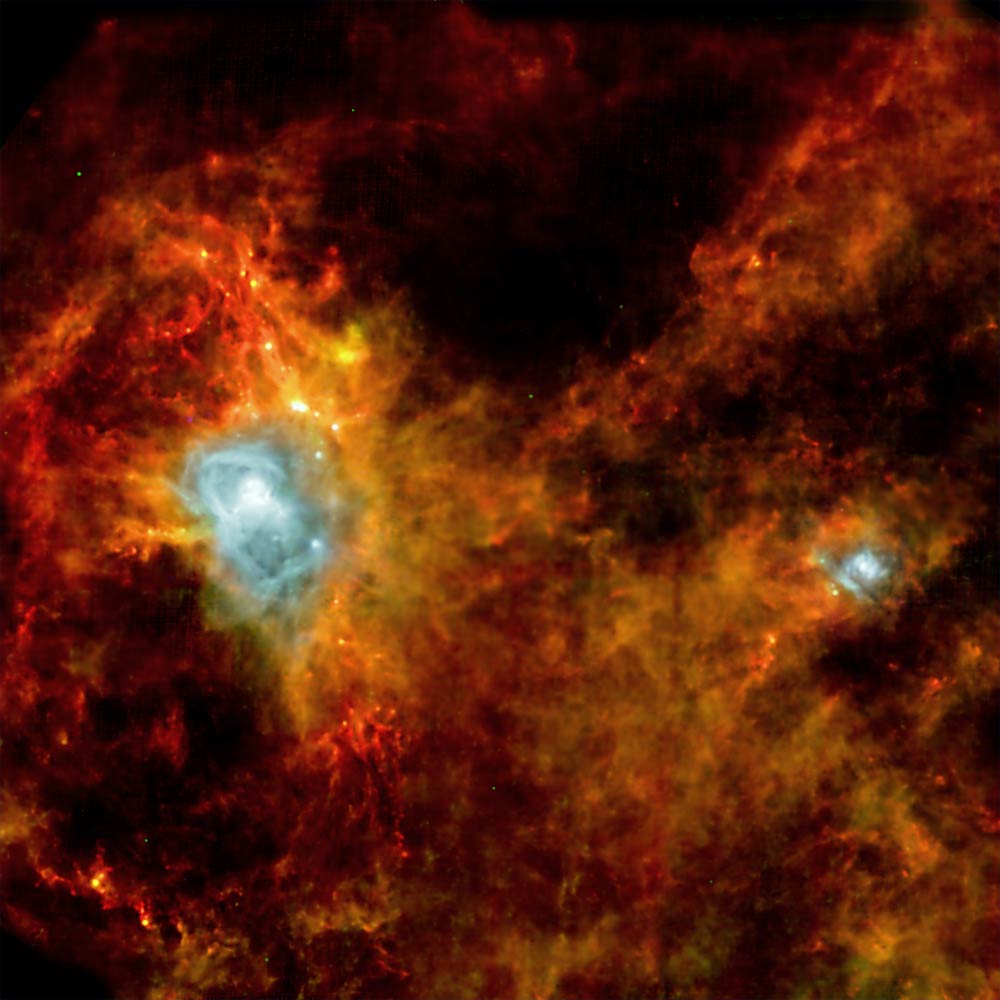Dark Heart of a Nebula Finally Photographed

A dark cloud at the heart of the Eagle Nebula had goneunseen until the Herschel Space Observatory peered inside for a new look,released today.
The nebula is astar-forming region about 1,000 light-years away in the constellationAquila, the Eagle. A light-year is the distance light will travel in a year, orabout 6 trillion miles (10 trillion km).
Telescopes had not been able to penetrate the thick darkclouds at the very center of this stellar nursery. Herschel used itsstrong sensitivity at the longest wavelengths of infrared light to probeinto this shrouded region.
The resulting photograph reveals roughly 700 newly-formingstars stretched along filaments of dust spanning the 65 light-year-wide image.The dust and gas in the filaments are at various stages of condensing to becomestars someday. Once they become dense enough to ignite nuclear fusion in theircores, the objects are considered true stars.
The two areas glowing brightest in icy blue light areregions where large newborn stars are causing hydrogen gas to shine.
The European Space Agency (ESA)'s Herschel telescope was launchedin May 2009 to study the universe in infrared light. The Eagle nebula imageis the first release of ESA's Online Showcase of Herschel Images.
- New Space Telescope to Map Infrared Sky Better Than Ever
- Bounty of Space Telescopes Fuels Golden Age of Astronomy
- Great NASA Tech Spinoffs Come Down to Earth
Breaking space news, the latest updates on rocket launches, skywatching events and more!

Space.com is the premier source of space exploration, innovation and astronomy news, chronicling (and celebrating) humanity's ongoing expansion across the final frontier. Originally founded in 1999, Space.com is, and always has been, the passion of writers and editors who are space fans and also trained journalists. Our current news team consists of Editor-in-Chief Tariq Malik; Editor Hanneke Weitering, Senior Space Writer Mike Wall; Senior Writer Meghan Bartels; Senior Writer Chelsea Gohd, Senior Writer Tereza Pultarova and Staff Writer Alexander Cox, focusing on e-commerce. Senior Producer Steve Spaleta oversees our space videos, with Diana Whitcroft as our Social Media Editor.
